In June of this year (2009), I went to the UK and to Europe to visit some of the great computer pioneers and in particular, to talk to them about their early cybernetic models they built. I travelled with David Buckley (see his site here), and one of our stops was to see Heinz Zemanek in Vienna. Heinz is 89 years old and still has an office at the University. He invited us into his rooms where he was putting together his archive, amongst other things. Certainly there was a good section on his shelves on Cybernetics. On the shelves included his copy of Cybernetics by Norbet Weiner. This copy was inscribed and addressed to Heinz, and was dated 15th January 1952. I had already researched some of Heinz’ background so I already knew that he was and is the only person to have completed his versions of the significant cybernetic models of the time, namely Grey Walter’s tortoise, Ashby’s Homeostat, and Shannon’s mouse in a maze.
The first of these was a tortoise built to the M. Docilis specification ie with the conditioned reflex. The student who built it was Ewald Eichler and it was built as part of his diploma thesis -Ewald Eichler: Ein umuetlabhaengiger Automat (Travail de diplome a l’Universite techniquo de Vienne, 1954)..


The above image is from Nemes book on "Cybernetic Models" – a must-have book for anyone interested in early Cybernetic Models.
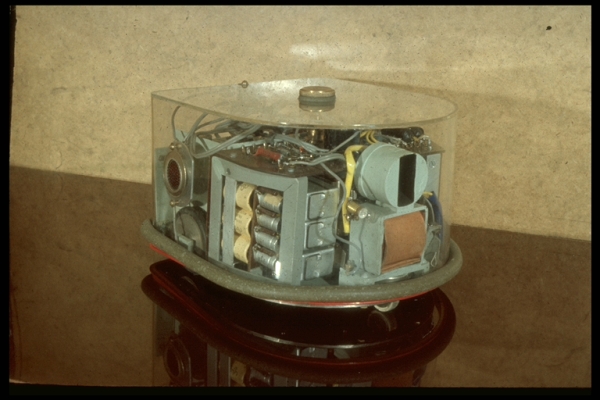
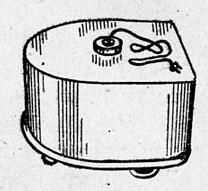
There is a video clip showing this tortoise. Not understanding German I cannot tell what it says. Actually, being a French video clip it may be in French.
Vienna Tortoise video clip location: Note you may need to register to view this clip.
5509GJ 00001 | 1955 | Gaumont | 00:00:45 | Sonore | N&B
VIENNE. LA TORTUE ÉLECTRONIQUE
… electronique. La nouvelle science connue sous le nom de cybernetique a preside, en AUTRICHE, a la construction de cette …
Référence | Date | Collection | Durée | Description |
5509GJ 00001 | 00/00/1955 | Gaumont (Journal Gaumont) | 00:00:45 | Sonore | N&B |
Titre
VIENNE. LA TORTUE ÉLECTRONIQUE
Résumé
——————————————————————————–
Images de la semaine.
VIENNE.
La tortue électronique.
La nouvelle science connue sous le nom de cybernétique a présidé, en AUTRICHE, à la construction de cette tortue qui préfigure l’âge futur.
cette machine obéit au sifflet, mais elle peut aussi se passer de tout commandement puisqu’elle est douée de volonté et même de mémoire.
La tortue évite les obstacles et nul ne peut prévoir quelle route elle choisira.
En donnant à la machine l’intelligence et le libre arbitre, les savants sont allés jusqu’au bout du chemin de l’apprenti sorcier.
Recherche technologie.
Still images from the film clip…
The above two pics show the steering mechanism. Being a solenoid that pulls to the side when it reverses. It is only a 2-position steering mechanism, and does not scan like Grey Walter’s tortoises.
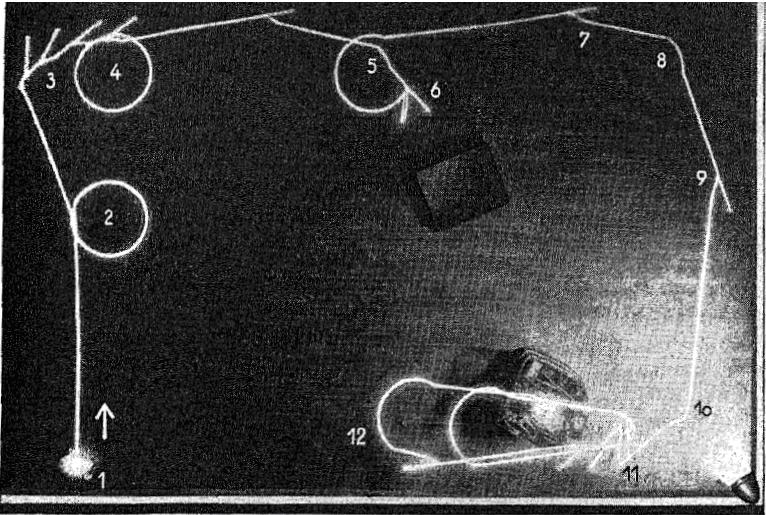
description of above time-lapse photo:
Eichler Time-Lapse translation:
German OCR:
Abb. 19. Gang des Automaten
Der Automat bewegt sich in einem rechteckigen, von Leisten eingesäumten Laufstall und trügt auf seinem Rücken ein Glühlämpchen. Bei 1 fährt er los und beginnt seine Umgebung abzusuchen. Bei 2 wendet er sich in einem Kreisbogen nach allen Seiten. Bei 3 stößt er an die Begrenzung an; durch mehrfache Ausweichbewegungen (gerade zurück — krumm vor) kann er sich aus der Ecke herausmanövrieren. Bei 4 hält er wieder Ausschau wie bei 2. Bei 5 wird seine Kreisfahrt plötzlich unterbrochen; die Photozelle ist in den Lichtstrahl geraten und der Automat fährt auf die Lichtquelle zu, trifft aber bald auf ein Hindernis (6). Der Reiz der Berührung ist stärker als die Anziehung des Lichtes, so daß der Automat ausweicht. Am Ende dieser Bewegungen ist die Lichtquelle aus dem Gesichtskreis entschwunden und das bei 5 unterbrochene Absuchen wird fortgesetzt. Bei 8 wiederholt sich der Vorgang von 5. Bei 7 und 9 stößt der Automat abermals an die Grenzen seines Laufstalls. Bei 10 hat er sich der Lampe bis auf Blendung genähert, wendet sich ab und trifft bei 11 auf die untere Leiste. Nach Überwindung des Hindernisses folgt wieder Absuchen der dunklen Umgebung: die Lampe wird wieder entdeckt: Annäherung, Blendung, Abwenden, und dies
wiederholt sich noch einmal (12)
(I haven’t yet merged the below two English translations to hopefully get one better version.)
Babelfish (English):
Fig. 19. Course of the automat The automat moves in a rectangular, from borders enclosed playpen and deceives on its back a glow small lamp. With 1 it drives off and begins its environment to search. With 2 it turns in a circular arc in all directions. With 3 it knocks against the delimitation; by repeated evasive actions (straight back – bent forwards) it can out-maneuver itself from the corner. With 4 it holds again look out as with 2. with 5 its circle trip is suddenly interrupted; the photoelectric cell is come into the ray of light and the automat drives on the source of light too, meets however soon an obstacle (6). The attraction of the contact is stronger than the attraction of the light, so that the automat evades. At the end of these movements the source of light from the scope is disappeared and with 5 interrupted searchings is continued. With 8 the procedure of 5. repeats itself with 7 and 9 pushes the automat again to the borders of its playpen. With 10 it approached the lamp up to glare, turns away and meets with 11 the lower border. After overcoming of the obstacle again searchings of the dark environment follow: the lamp is again discovered: Approach, glare, turning away, and this repeats itself again (12)
Google (English):
Fig 19th Gang of machines
The machine moves in a rectangular strip of enclosed playpen and deceptive on his convincing a Glühlämpchen. At 1 he starts going on and its surroundings scan. At 2 he turns in a circle on all sides. With 3 triggers it to the limit, through multiple alternate movements (straight back – before crooked) can be viewed from the corner herausmanövrieren. At 4, he again look like 2nd In District 5, his journey suddenly interrupted the photocell is advised in the light and the machine goes on to light, but soon meets an obstacle (6). The appeal of the contact is stronger than the attraction of light, so that the machine evade. At the end of this movement is the source of light from the horizon entschwunden and at 5 interrupted scanning will continue. In 8 of the process is repeated from 5 At 7 a.m. to 9 p.m. triggers the machine again to the borders of his Laufstalls. At 10, he has the lamp to dazzle approached, turns and hits with 11 on the lower bar. After overcoming the obstacle scanning follows the dark surroundings: the lamp is rediscovered: Approach, fading away, and this
is repeated again (12)
A couple of pics from my own visit. I’ll later put the full set into a photo galley on this domain.
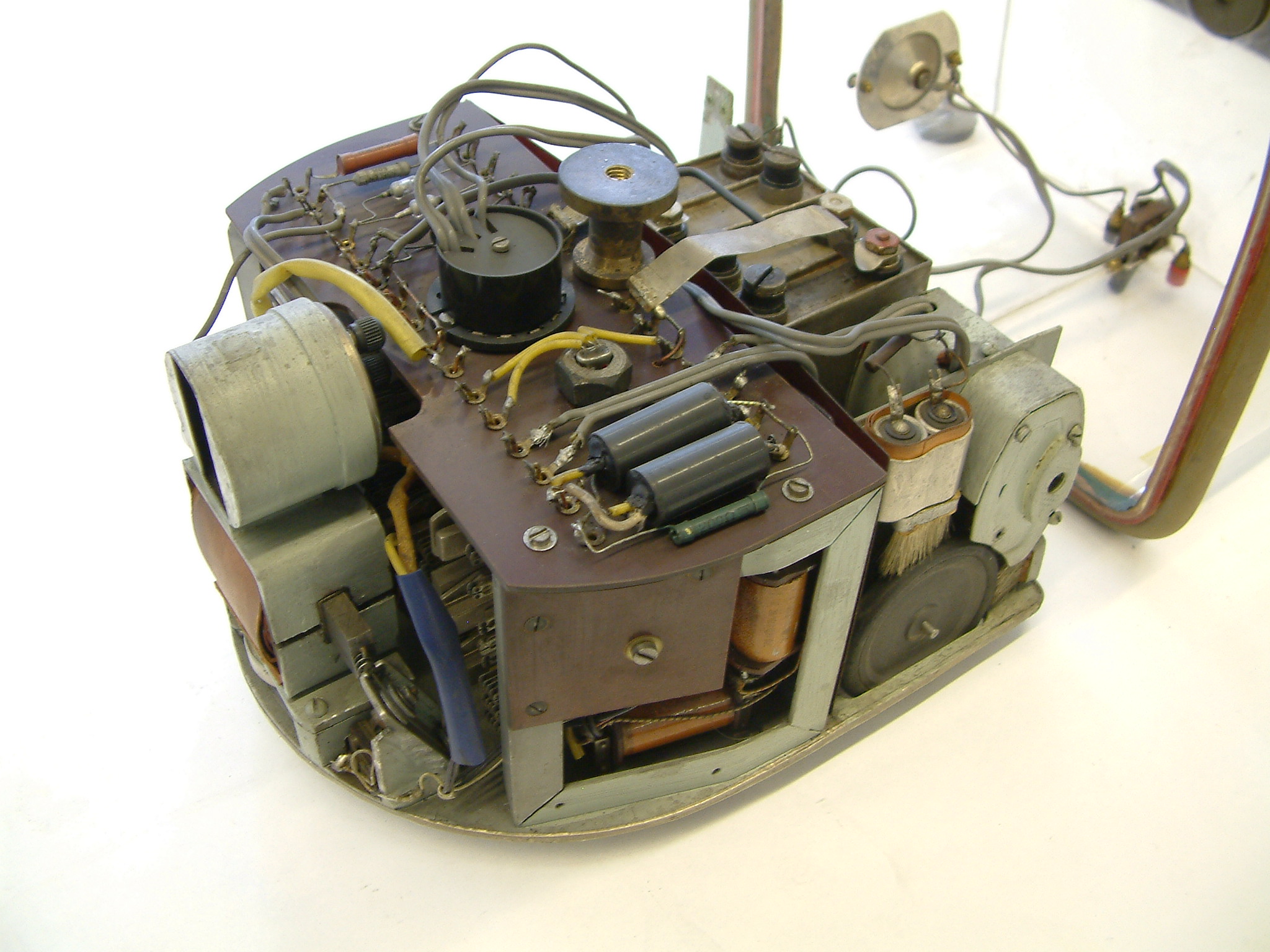
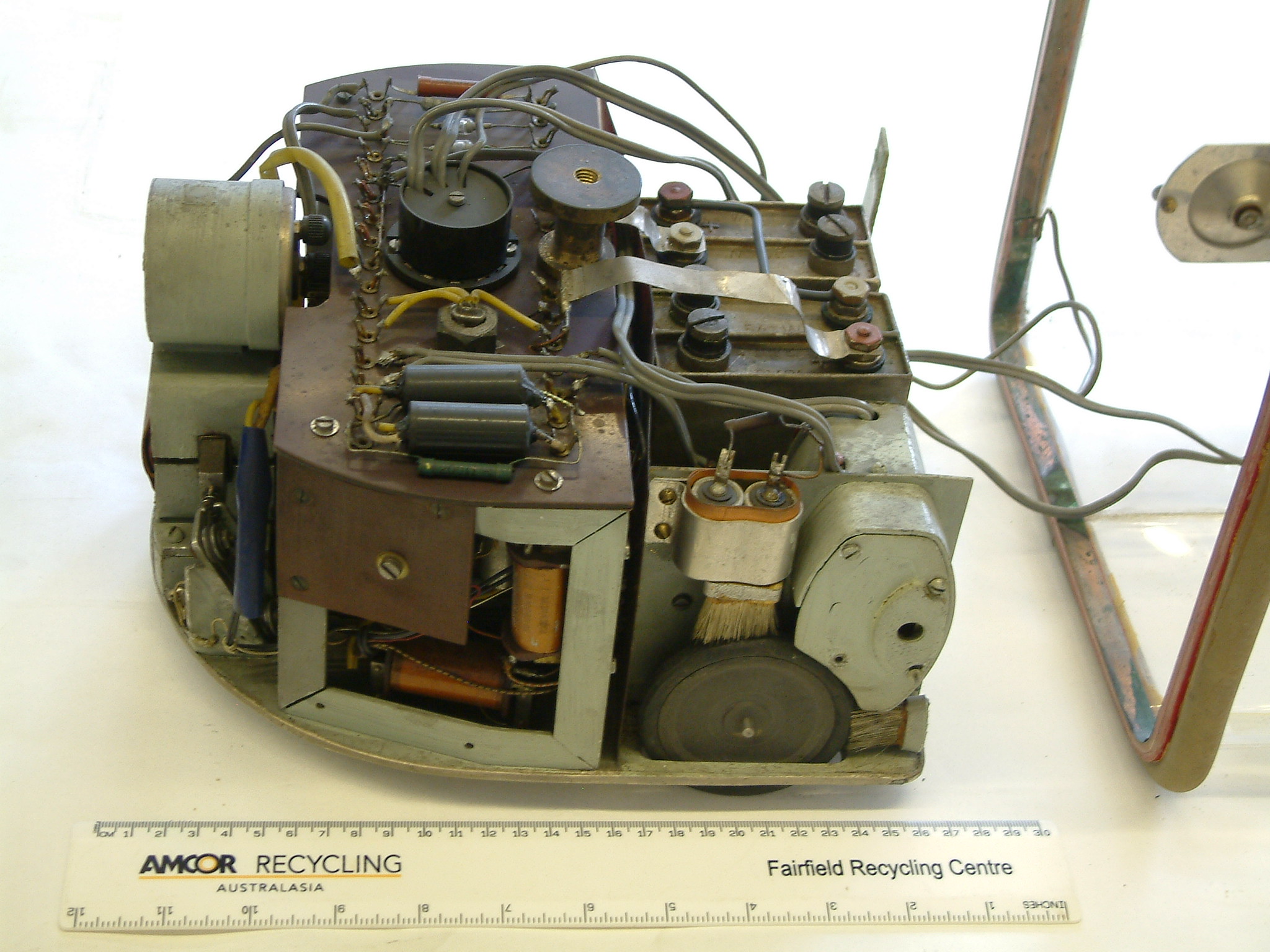
References:
Zemanek, Heinz: Die künstliche Schildkröte von Wien. In: Radio-Magazin mit Fernseh-Magazin, 9 (1955), S. 275 – 278 (ZA 049)
[The Artificial Tortoise of Vienna:] Article about a project of an artificial tortoise built by Ewald Eichler in 1955
Zemanek, Heinz: La tortue de Vienne et les autres travaux cybernétiques. In: 1er Congrès International de Cybernéthique, Namur, 26-29 Juin 1956. Paris 1959. (Actes de … Congrés International de Cybernétique) S. 770 – 780 (ZA 083)
[The Tortoise of Vienna and other cybernetic projects:] Article in french about several cybernetic projects

The author with Heinz Zemanek, June 2009.